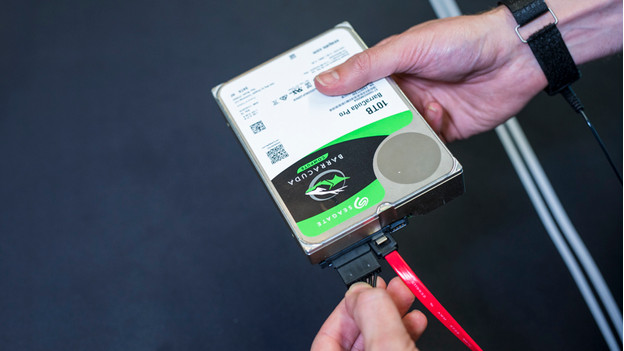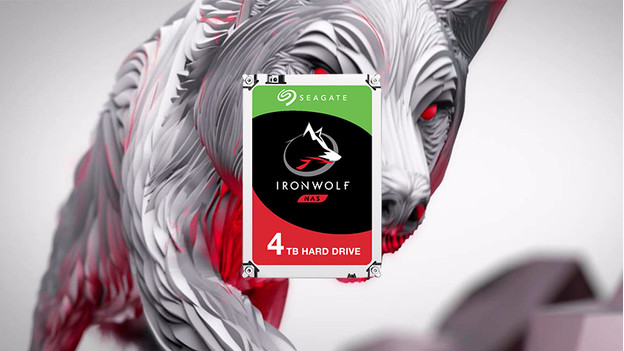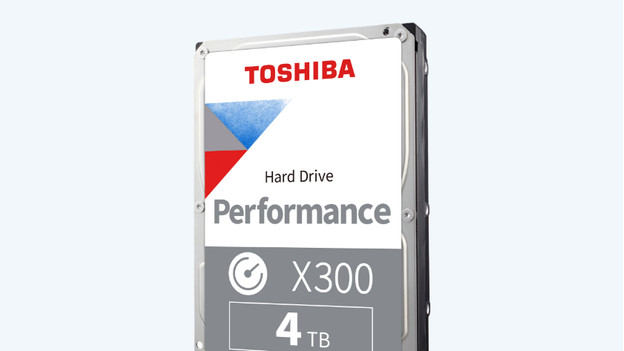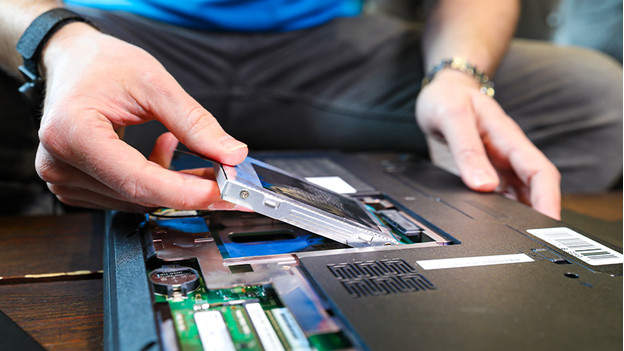
How do you make your drive visible in Windows?
Make drive visible

After installing your drive, it can happen that Windows Explorer can't find your drive. We have 4 causes for this problem with a fitting solution. The first step is opening 'Disk Management'.
- Go to Disk Management
- Cause 1: your drive isn't initialized
- Cause 2: your drive isn't allocated
- Cause 3: your drive isn't formatted
- Cause 4: your drive doesn't have a drive letter
Go to disk management

Click the Windows icon in the task bar of your screen with your right mouse button. In the options list, you can find 'Disk Management'. The shortcut 'Windows + X' also works for opening these options. You can see an overview of all drives and partitions in your computer. Enlarge the window until you see the grid at the bottom of the screen.
What's the cause?
| Possible causes | How do you recognize every cause? |
|---|---|
| 1: Your drive isn't initialized | An automatic pop-up or the notification 'Not initialized' |
| 2: Your drive isn't allocated | The notification 'Unallocated' in the grid |
| 3: Your drive isn't formatted | The notification 'RAW' under 'File system' |
| 4: Your drive doesn't have a drive letter | There's no drive letter, such as (D:) |
Cause 1: Your drive isn't initialized

You need to initialize your hard drive before you can use it. Your operating system doesn't recognize the drive as a storage system if you don't do this. This is how you intialize the drive:
- Open 'Drive Management'.
- If your drive isn't initialized yet, you'll get an 'initialize drive' pop-up.
- Didn't you get a pop-up, but do you see a notification with 'Not initialized'? With your right mouse button, click the drive in the grid and choose 'Initialize drive'.
- Choose between MBR (up to 2TB) and GPT (larger than 2TB).
- Click OK.
Cause 2: Your drive isn't allocated (partitioned)

After initializing your drive, you need to allocate it. You'll see the notification Unallocated next to the relevant drive. The next step is creating a new volume. You do this by partitioning and formatting the drive. Tip: when formatting, it's best to choose NTFS. Follow these steps for making a new volume:
- Right-click your drive in the grid and select 'New simple volume'.
- A new window opens, click 'Next'.
- In this window, you can choose the volume size. Keep it as it is and click 'Next'.
- Choose a drive letter (For example, D or E) and click 'Next'.
- In the next window, you format the drive. Select the file system, preferably NTFS.
- Make sure the cluster size remains 'Standard' and choose a volume name (for example 'Data'). This will become the name of the drive.
- Check the box 'Perform a quick format' and leave 'File and folder compression' empty. Click 'Next'.
- Click 'Complete'.
Cause 3: Your drive isn't formatted

After initializing and allocating your drive, you sometimes still need to format the drive for Windows. In that case, the file system will say RAW. Note: when you format your drive again, you will erase all files on the drive. That's why you should only do this with new drives or after you've made a backup. This is how you format a drive:
- Right-click the drive in the grid and select Format.
- Choose a volume label. This is what the drive will be called.
- Select the file system, preferably NTFS.
- Leave the cluster size on 'Standard'.
- Check the box Perform quick format and leave File and folder compression empty. Click 'OK'.
- You'll receive a warning. Only click 'OK' if you're sure that your files are safe.
Cause 4: Your drive doesn't have a drive letter

Sometimes your drive doesn't have a drive letter after initializing, allocating, and formatting it. A drive letter is (D:) for example, like you see in the explorer. This is how you assign a drive letter:
- Right-click the right drive in the grid and select 'Change drive letter and paths'.
- Click 'Add' if you want to add a new letter or 'Change' if you want to change it. Click 'OK' afterwards.
- Select a letter. Click 'OK'.
Still not successful?

Didn't these tips help? Perhaps your device doesn't support the drive. Check the manual of your computer or laptop to be sure. Is it supported? It's possible that the drive or the connector of your device is broken. Try installing the drive in another device and check if it works then. Is it still not visible? Please contact our customer service.


